Estimated reading time: 11 minutes
Disclaimer: I am not a medical doctor and nothing in this article should be taken as medical advice. Please talk to your doctor before using any of the herbs and/or remedies mentioned in this article.
In most wilderness survival situations, the pursuit of food is determined by pure sustenance. Plants, fruits, nuts and animals that can provide enough calories and nutrients to allow someone to survive on a very basic level.
Want to save this post for later? Click Here to Pin It on Pinterest!
But there’s another side to wild foraging in certain plants with unique properties. These plants fall into the category of superfoods.
What is a Superfood?
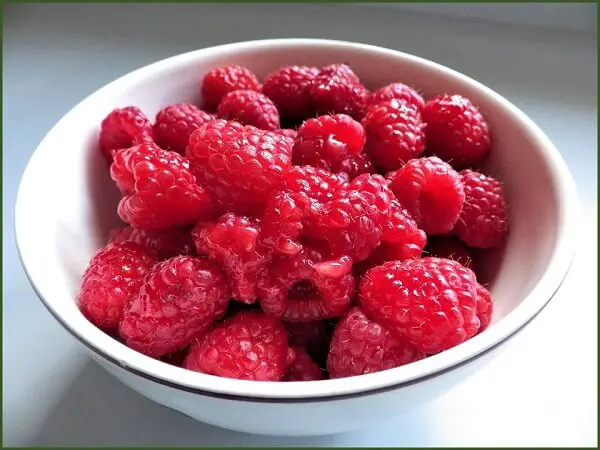
A superfood presents unique compounds, bioflavonoids, and micronutrients that gives it remarkable curative properties. Some superfoods have been proven in clinical studies to have anti-cancer and anti-inflammatory properties, to be good for the immune system and cardiovascular health, to protect the eyes and the liver, to promote improved brain function, and to strengthen bones and pulmonary function.
If you have any doubts, consider this: penicillin was derived from a fungus. Aspirin was distilled from the inner bark of the willow tree. Numerous pharmaceuticals and over-the-counter medicines are derived from plant superfoods and continuing research finds more and more of them every day. They also taste good, too.
Which Parts of a Plant Provide the Greatest Benefit?
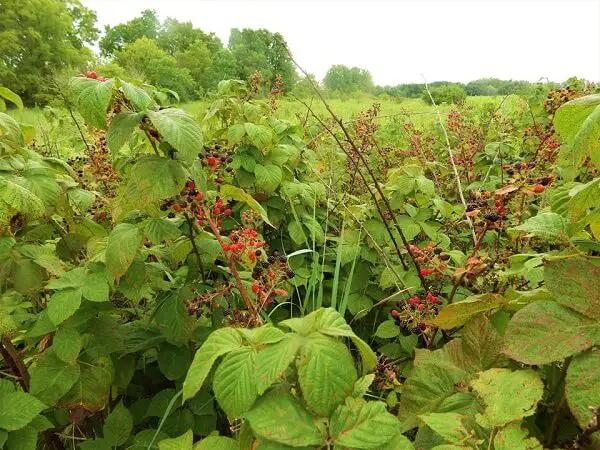
As you would suspect, that varies. The leaves of dandelions, plantain, purslane and wild grape all present superfood characteristics.
Fruits like blueberries, red raspberries, and black raspberries present some jaw-dropping benefits including results from clinical studies that have shown a compound in blueberries that can inhibit and stop the growth of cancer cells in certain types of cancer.
Nuts from trees also find themselves in the superfood category, especially walnuts.
Dosage and Potential Side Effects
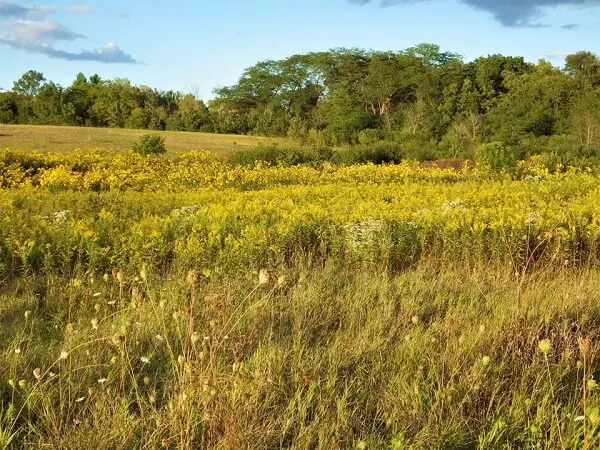
As a general rule, you can’t overdose on a superfood, but there are some instances of side-effects and drug interactions. The Vitamin-K in dandelion, plantain and purslane leaves is a natural blood thinner and can compromise prescribed blood-thinners like Warfarin by making the blood too thin. This can be adjusted with regular visits to a Coumadin clinic to assess the dosage of a prescribed blood thinner if a diet high in Vitamin-K is consumed.
There’s also the possibility of an allergic reaction. It’s an unfortunate fact that many of us can develop an allergy to just about anything, and wild superfoods are no exception. If you notice any symptoms of an allergic reaction (sweating, sneezing, runny nose, swelling, hives or a rash) stop consuming or drinking it immediately. If the symptoms worsen, you might want to head to the emergency room.
For the record, none of the ten wild foods listed below have been identified as a high-risk allergen, but given our propensity to find allergies for anything, it’s better to be aware of the possibility. If you have a chronic medical condition or are taking prescription pharmaceuticals, you should consult your doctor before pursuing natural remedies of any kind.
10 Wild Superfoods
Here are the top 10 wild superfoods and the benefits they provide based on credible clinical studies. Links to the studies are highlighted in each reference. We’ll also include some cooking or serving tips.
1. Blueberries
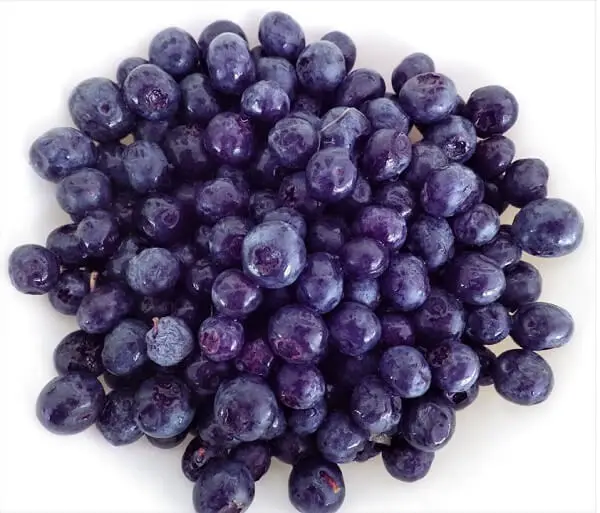
Based on numerous Clinical Studies done by various Universities, bioflavonoids and micro-nutrients in blueberries have been shown as an anticancer inhibitor, an anti-obesity treatment, an anti-inflammatory inhibitor, and an anti-diabetes inhibitor.
Blueberries can also prevent degenerative diseases, protect vision and liver, improve brain function, protect lung properties, build strong bones, enhance the immune system, prevent cardiovascular diseases, and minimize cognitive decline.
Blueberries are among the most nutrient-dense berries. A 1-cup serving of blueberries contains:
- Fiber: 4 grams
- Vitamin K: 36% of the RDI
- Manganese: 25% of the RDI
- Vitamin C: 24% of the RDI
2. Dandelion Greens
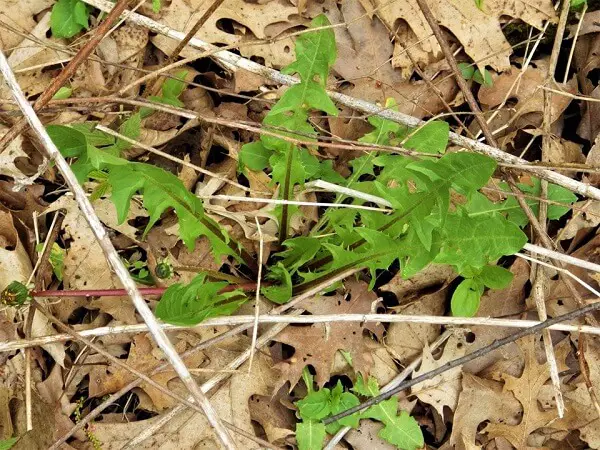
Step aside, kale and spinach. Ounce for ounce, dandelions have more vitamin K (a natural blood thinner), magnesium, iron, potassium, calcium, phosphorous, and other minerals and vitamins than any other leafy green.
The health benefits of dandelion include relief from liver disorders, diabetes, urinary disorders, jaundice, and anemia. It also helps in maintaining bone health, skin care, and weight loss. Dandelion is also known to aid in improving appetite, reducing muscle pain, easing stomach disorders, and it helps treat bruises as well.
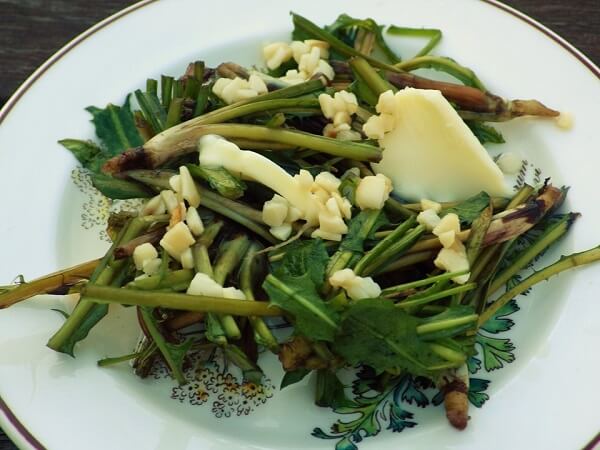
3. Goldenrod Flowers
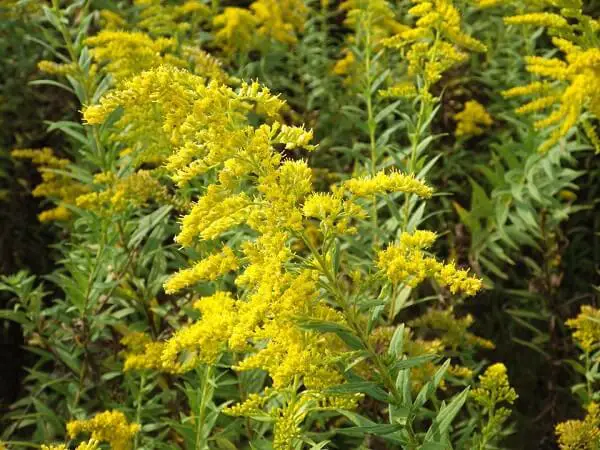
A clinical study by the University of Illinois showed that a distillation of dandelion flowers in an infusion or tea indicated relief for urinary tract and bladder infections. The German Commission E has officially approved goldenrod for urinary and bladder inflammations.
It is also a good source of rutin which is a powerful flavonoid with cardiovascular benefits including capillary strength, and it is higher in antioxidants than green tea.
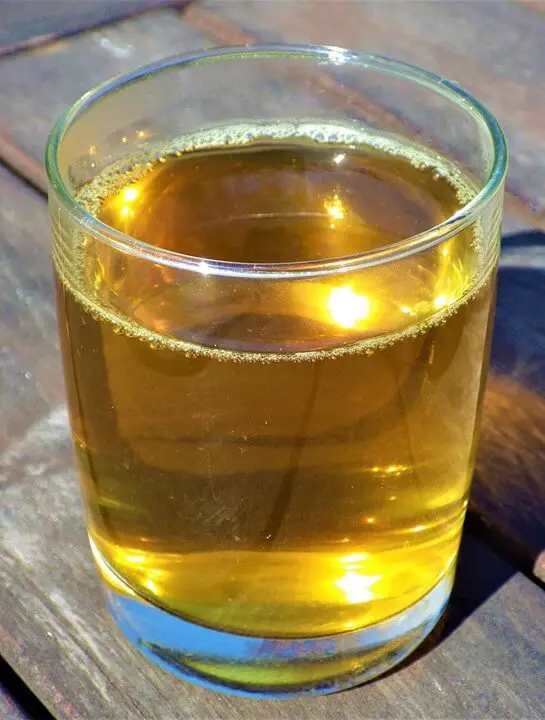
4. Blackberry Leaves
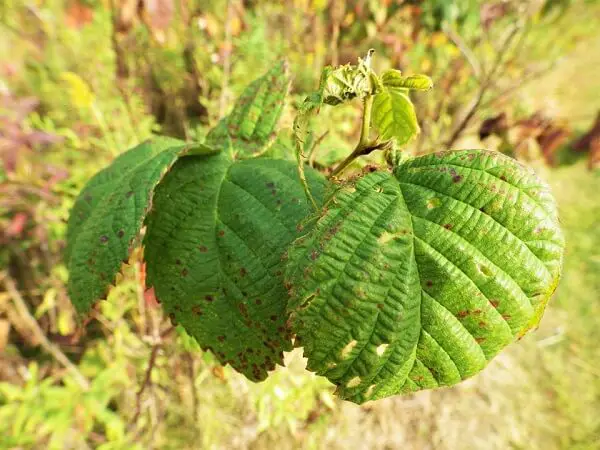
Based on numerous studies, blackberry leaves have anti-bacterial properties that relieve gum infections, relieve chronic gum inflammation, soothe sore throats, cure canker sores, relieve membrane inflammation, stop diarrhea, boost the immune system, heal wounds faster, fight ulcer bacteria, treat hemorrhoids, contribute to overall cardiovascular health, cure skin rashes, treat rheumatism, and stop indigestion.

5. Walnuts
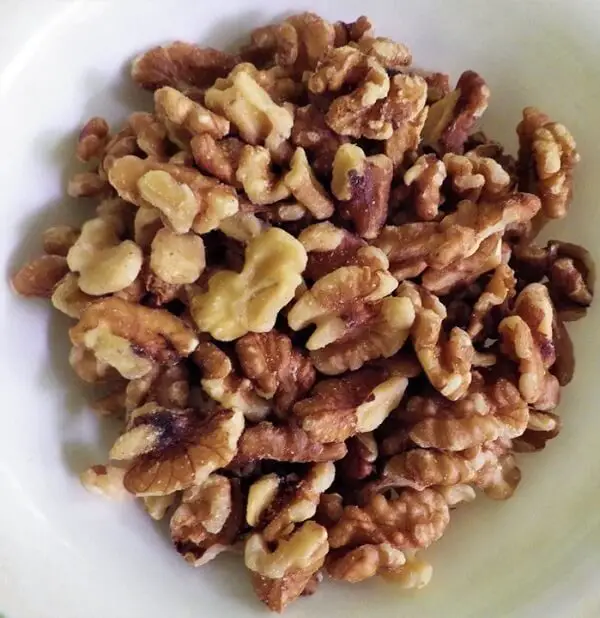
According to a Clinical Study done by the Department of Chemistry / University of Scranton, walnuts have very high degrees of Omega-3 fatty acids, aid in the reduction of LDL (bad) cholesterol, prevent inflammation, improve overall metabolism, aid weight management and diabetes control. Walnuts can also improve brain health related to dementia and act as a mood booster.
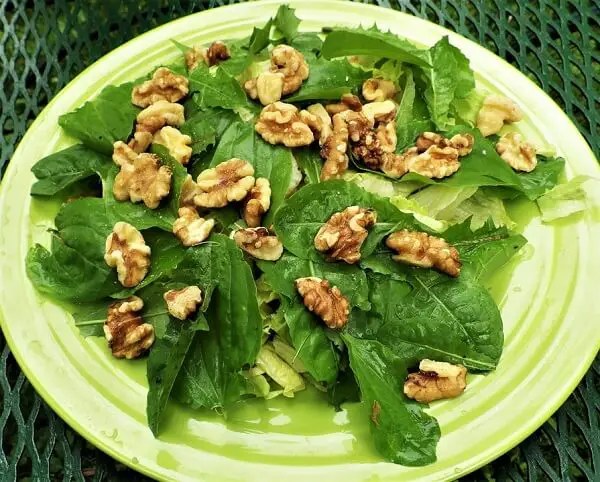
6. Grape Leaves
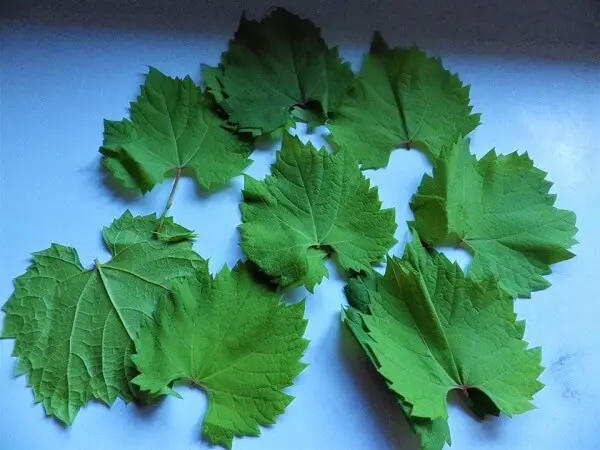
Grape leaves are high in fiber and are good sources of beta-carotene, vitamin C, vitamin K and calcium. Fresh grape leaves contain about 2% fat, a surprisingly large amount for a green vegetable, and a substantial share of that fat is omega-3.
Research published in the International Journal of Food Properties in early 2013 found that the grape leaves have strong antioxidant properties.
In addition, this study found grape leaves to possess antimicrobial activity against Escherichia coli, Salmonella Infantis, Staphylococcus aureus, Bacillus cereus, and Campylobacter jejuni.
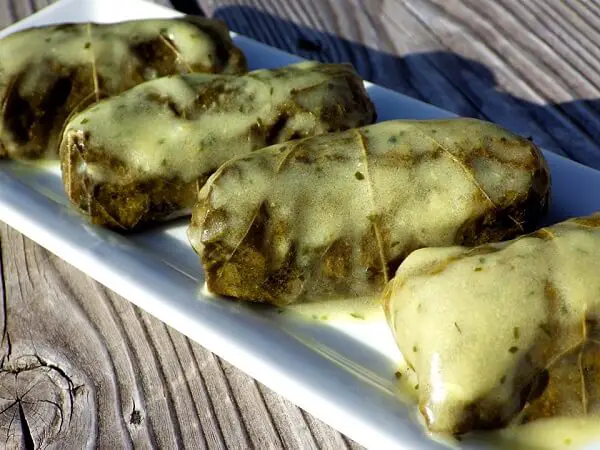
7. Plantain
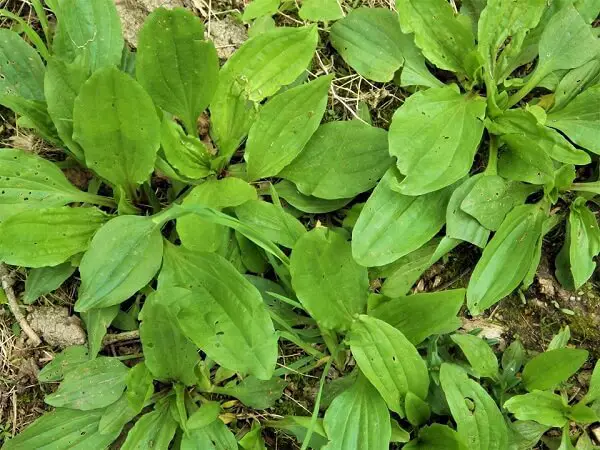
The young leaves of the plantain are high in beta-carotene and calcium and are a source of vitamin C content. It has been used traditionally as a cough medicine as an infusion or a syrup to treat colds and bronchitis.
The leaves are also used in a poultice to treat skin irritations related to sunburn, acne, eczema, and poison ivy. It has also been used to treat insect stings and for centuries has been used to treat wounds using boiled leaves dipped in honey and applied to the wound.
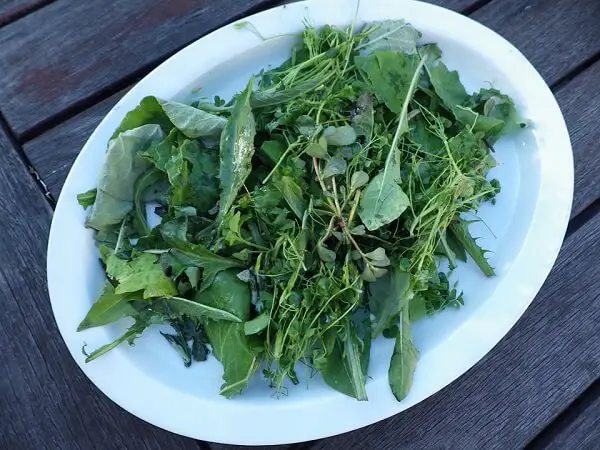
8. Purslane
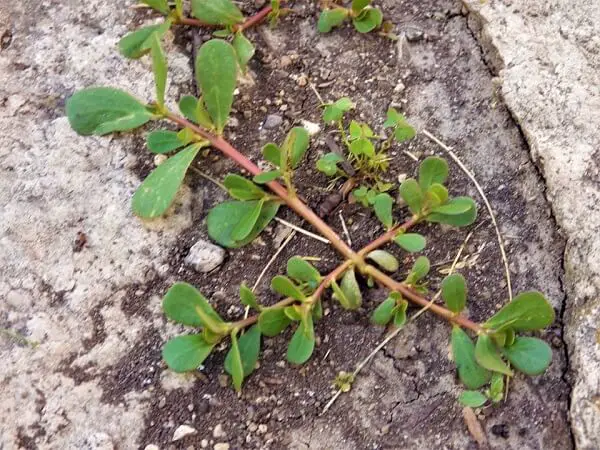
Thanks to a number of studies, purslane is known to contain high levels of omega-3 fatty acids and gamma-linolenic acid.
It can be eaten raw and has a slightly sour and salty taste, but the leaves and stems are traditionally prepared steamed or cooked as a leaf vegetable. It has seven times the beta-carotene of carrots and six times more vitamin-E than spinach.
9. Wild Violet
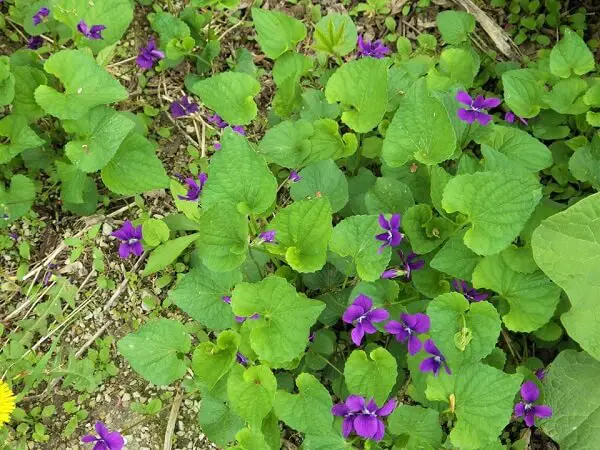
Wild Violets are known for their powerful blood purifying attributes. They also stimulate the lymphatic system and are known for their skin clearing qualities.
The leaves and flowers can be infused in a nutritive tea or tinctured for their medicinal compounds to treat asthma, bronchitis, cold, fever, mumps, scurvy, ulcers, varicose veins, and whooping cough.
10. Red and Black Raspberries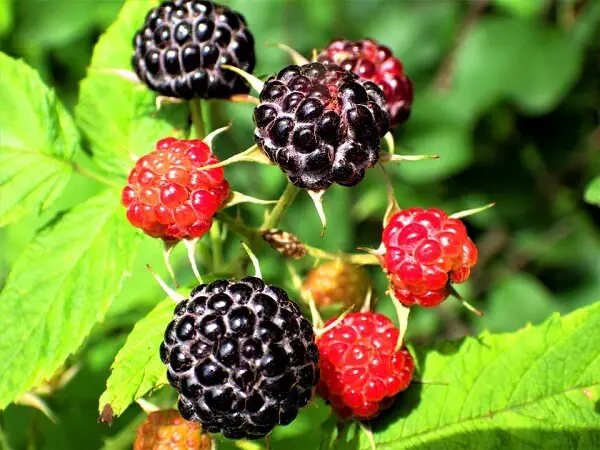
Red raspberries are loaded with ellagic acid and other phytochemicals that have been linked to a number of health benefits. Black raspberries contain many of the same health-protective compounds as their red cousins, but in addition, they also contain high levels of antioxidants.
A study published in the December 2006 issue of the Journal of Agricultural and Food Chemistry found that “Both red and black raspberries inhibited the growth of human colon, oral, breast, and prostate tumor cell lines in test tubes.
Black raspberry was also found to possess extremely strong pro-apoptotic effects against the tested colon cancer cell line. As their name suggests, pro-apoptotic foods and compounds promote apoptosis, a natural process that your body uses to get rid of unneeded or abnormal cells.”
Like this post? Don't Forget to Pin It on Pinterest!



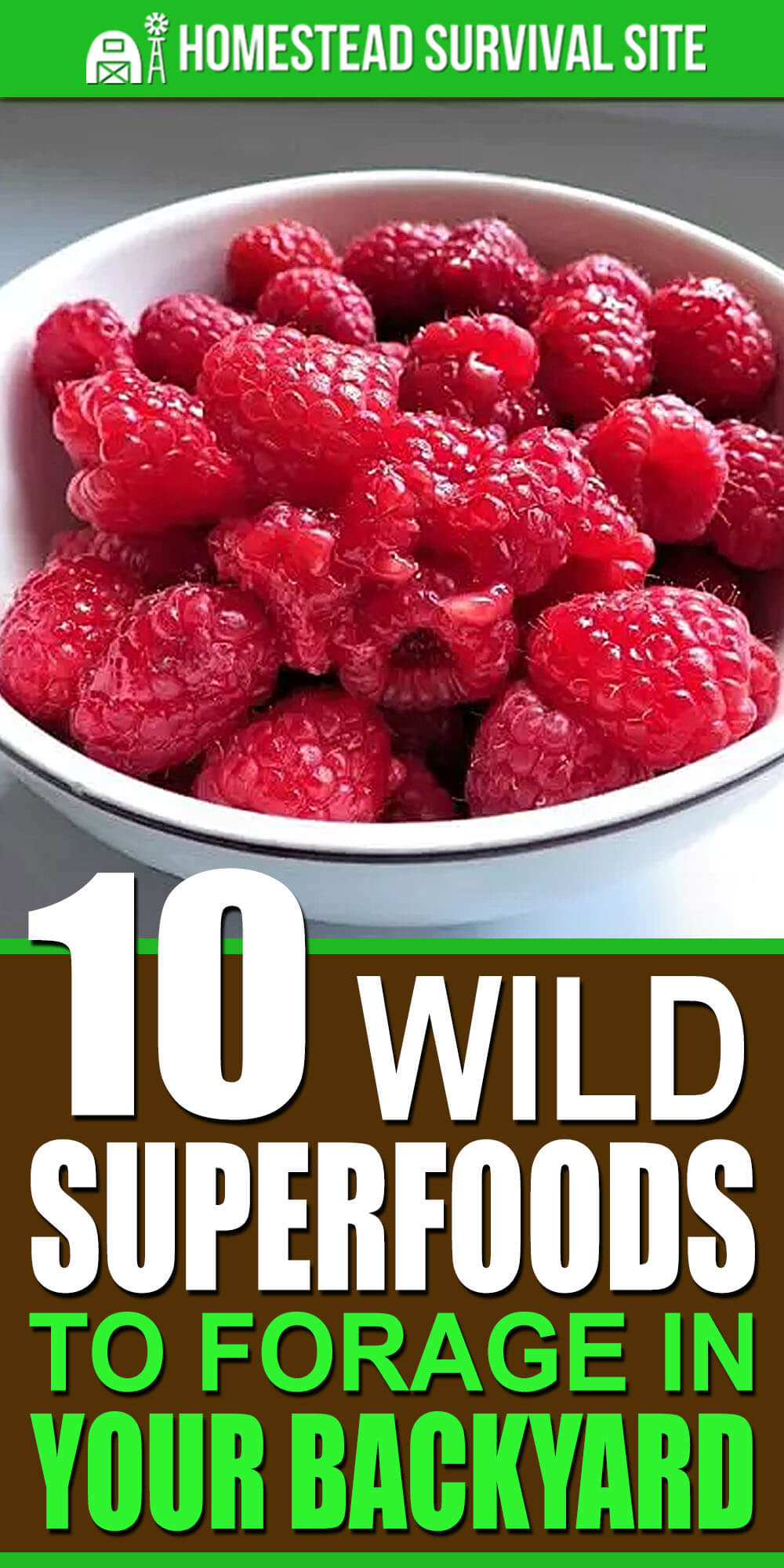


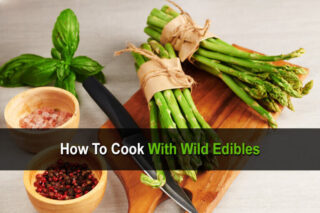


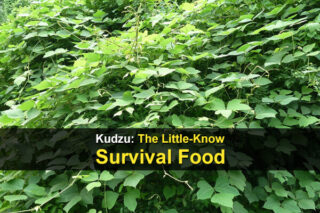



Very interesting though I question the order and at least one omission. Every adult or sensible older child needs a good knife or kukri equivalent – you could encounter anything, anyone wanting to steal your stuff.
The initial event brings terror, inability to think etc. So,
1) prior training and practice. Make everyone actually set off a fire extinguisher and use it PROPERLY (I made our at-risk staff do this – the ladies were terrified but afterwards saw it was easy.)Learn to actually do CPR, breathing control. Dealing with injuries of every type – does the St John Ambulance run local courses?. (We were armed and knew when to “help” someone with terminal radiation poisoning – not recommended!)
2) Get a manual of edible plants (and warning about some fungi). Your Green Berets and our SAS get this training automatically. The more you can scavenge the longer your food store will last – an expert does not even need that food stash.
3.Mention checking batteries for torches, radios etc at frequent intervals. In the house place torches and fire extinguishers where you can find them in pitch darkness without taking risks (stairs for example)
My school did a one year course for older pupils whilst we waited for a Russian nuclear bomb. Water rescue, first aid covering everything from cuts to fractures to child birth all with what equipment we could scavenge, debris search for survivors, Extraction of the injured from high and low, fire fighting run by local fire brigade, using and refilling fire extinguishers, survival camping etc ad infinitum.
This training should be early-on. With prior thought it becomes far less intimidating. I was in a car crash with +/- 6 fractures, bleeding etc but I was still able to direct passers-by as to what to do for those involved. BECAUSE I HAD PRIOR UNDERSTANDING of assessment and what needed to be done.
(I have never been a firefighter, medical person of any type – I worked in a bank though I was licenced as a rescue marshal on motor racing tracks worldwide and I helped teach arctic survival at minus 25C to RAF pilots)